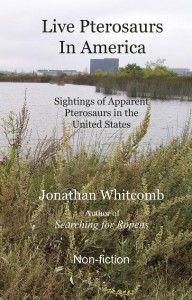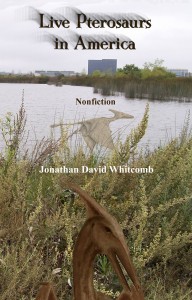Sometimes critics of live-pterosaur investigations mention a lack of objectiveness with those investigators, but I now look at potential objectiveness problems in the thinking of those critics. Rather than be guilty of bulverism by jumping into what may be wrong with the thinking of those who think differently than I do, I start with what one particular writer has said in disputing the plausibility that pterosaurs cause many of the sightings of apparent pterosaurs.
I will call him DCZ, this cryptozoologist who finds alternate explanations for sightings of live pterosaurs. I do not dispute all that he writes about the possibility of misidentification in reported sightings of the Kongamato. What we need is objective thinking while examining each individual sighting report.
DCZ says that the Kongamato originally referred to a water monster. He believes a large stingray could overturn a boat (“Kongamato” means overturner of boats), declaring that a pterosaur would never have enough mass to overturn a boat. I find a number of serious problems with that pterosaur-impossible assumption, although there may have been some instances of large stingrays being labeled “Kongamato.” The point is twofold: His dismissal of the pterosaur possibility is flawed and the dependence on the label “Kongamato” can cause problems as well as solve them.
How important that we understand that “pterosaur” does not refer to any particular species! How many pterosaur species may have lived in the past (and, I believe, in the present)! How few of them have left us fossils, compared with the innumerable ones that died without leaving any trace of their anatomy! Some paleontologists have become so focused on the precise details in the fossils that they have forgotten the ramifications of the obvious: A surviving pterosaur species may differ from pterosaurs that left us fossils. (And how few of those fossils have been discovered!) Looking at the enormous varieties of creatures now living, how enormous are potential differences!
Think about this: Can fossils of small turtles prove that reports of giant Galapagos Tortoises must be mistaken? With somebody ignorant of those giant tortoises of that Pacific island, could not any report sound impossible? Could not a knowledge of fossils of small or medium-sized turtles and tortoises seem to discredit reports of giant Galapagos Tortoises? Of course, if those with that specific ignorance allowed themselves to overinflate the importance of their specific knowledge. But with objective thinking, and at least a little knowledge about Galapagos Tortoises, that response appears ridiculous.
The point of that exercize? Reports of giant long-tailed pterosaurs in the southwest Pacific cannot reasonably be dismissed by just referring to small fossils of Rhamphorhynchoid pterosaurs. How ridiculous!
But another problem appears from examining the reasoning of DCZ in dismissing the possibility that any pterosaur could overturn any boat. How are small boats usually overturned? A human in a small boat makes a wrong move. Put yourself into that small boat and how would you react to an attack by a reported-dangerous flying creature with many teeth? How could you avoid making a wrong move for a small boat? How easy for a terrified human to overturn a boat that was dive-bombed by a Kongamato! What difference does it make if the mass of that flying creature is insufficient to overturn a boat by only an impact?
I suspect that a lack of objectiveness, on the part of DCZ, may have caused him to rely too much on the original source of the word “Kongamato.” The common meaning for that word, in Western countries, is “modern pterosaur in Africa.” Early native encounters with large stingrays are irrelevant to the many reported sightings of obvious pterosaurs in Africa.




